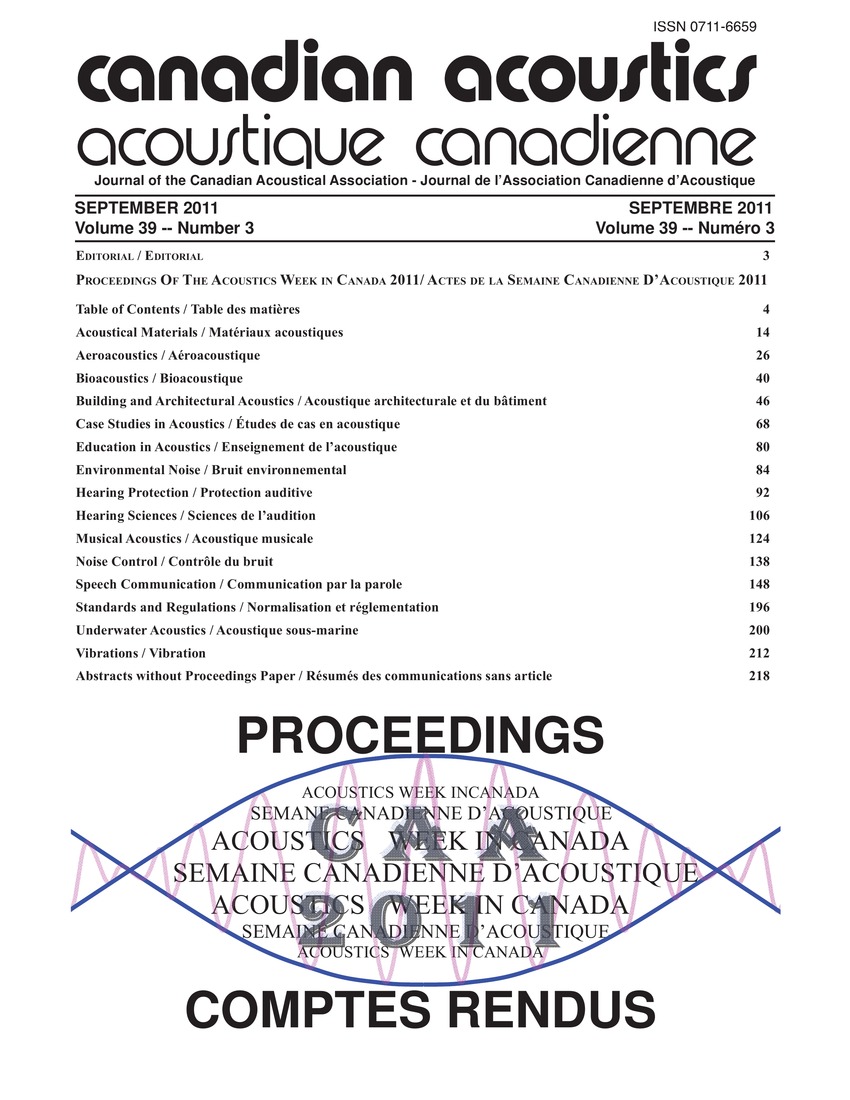Examining airborne sound transmission loss in various wall constructions
Keywords:
Gypsum, Studs (fasteners), Airborne sound, Bottom plate, Dogbone, Gypsum board, Low frequency, Multi-family dwelling, Transmission loss, Wall assembly, Wall constructionAbstract
A study that is intended as a guide to better design and construct wall assemblies that meet and exceed minimum code for multifamily dwellings is presented. Two types of framing were used in an attempt to decouple the gypsum board from the structural studs. The first was a 12.5mm Dietrich single leg RC deluxe resilient channels with dog bone slots. These were attached to the studs and oriented horizontally with the resilient leg above the screw leg and spaced 610mm O.C. The double stud construction yielded the highest transmission loss results at low frequencies and the highest overall STC. The decoupled wall is much more effective than simply adding mass. Doubling the drywall only produced a 4dB increase, while creating a decoupled second row of studs and top and bottom plates produced an increase of 24dB.Additional Files
Published
How to Cite
Issue
Section
License
Author Licensing Addendum
This Licensing Addendum ("Addendum") is entered into between the undersigned Author(s) and Canadian Acoustics journal published by the Canadian Acoustical Association (hereinafter referred to as the "Publisher"). The Author(s) and the Publisher agree as follows:
-
Retained Rights: The Author(s) retain(s) the following rights:
- The right to reproduce, distribute, and publicly display the Work on the Author's personal website or the website of the Author's institution.
- The right to use the Work in the Author's teaching activities and presentations.
- The right to include the Work in a compilation for the Author's personal use, not for sale.
-
Grant of License: The Author(s) grant(s) to the Publisher a worldwide exclusive license to publish, reproduce, distribute, and display the Work in Canadian Acoustics and any other formats and media deemed appropriate by the Publisher.
-
Attribution: The Publisher agrees to include proper attribution to the Author(s) in all publications and reproductions of the Work.
-
No Conflict: This Addendum is intended to be in harmony with, and not in conflict with, the terms and conditions of the original agreement entered into between the Author(s) and the Publisher.
-
Copyright Clause: Copyright on articles is held by the Author(s). The corresponding Author has the right to grant on behalf of all Authors and does grant on behalf of all Authors, a worldwide exclusive license to the Publisher and its licensees in perpetuity, in all forms, formats, and media (whether known now or created in the future), including but not limited to the rights to publish, reproduce, distribute, display, store, translate, create adaptations, reprints, include within collections, and create summaries, extracts, and/or abstracts of the Contribution.


